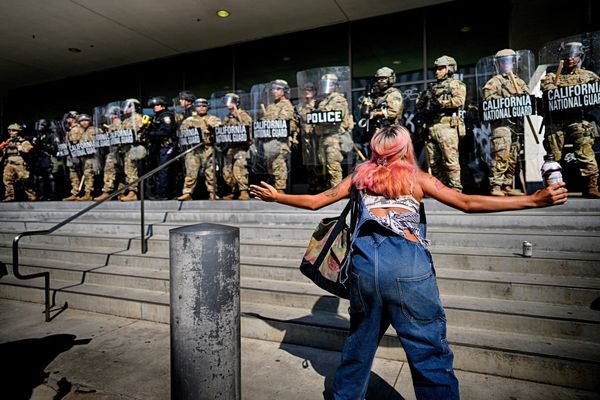
The true crime genre has a new medium, or maybe even a whole new language and grammar: police body cam footage. Faces of victims, witnesses and possible perpetrators loom up to the cameras, sometimes in the harsh glare of headlights or flashlights as the officers approach, their faces and voices eloquent of wariness or panic or indignation or suspiciously contrived innocence. And we often incidentally glimpse the faces of the officers themselves, one standing by blankly while the other asks the questions with what sometimes seems like extraordinary diffidence – though perhaps this is because they know they are being recorded.
We have already had the Netflix true-crime documentary American Murder: Gabby Petito, about the slaying of an Instagram influencer by her boyfriend, whose main point of interest was body cam footage and in which, as in this film, the police seemed extraordinarily lax with the perpetrator. There is also Bill Morrison’s Oscar-nominated short Incident, composed entirely of body cam film. Now comes Geeta Gandbhir’s documentary about the grim case of Ajike Owens in Ocala, Florida, a woman of colour whose four young kids allegedly harassed and tormented her white neighbour, Susan Lorincz. In 2023, after an escalating series of neighbour-dispute incidents in which the police were repeatedly called, Lorincz shot Owens dead through her closed front door, when Owens went to Lorincz’s house to confront her about throwing objects at her children.
The arresting officers found evidence that Lorincz had done online research into Florida’s “stand your ground” laws, which allow householders and others to shoot if there is a significant presumption of danger. The movie builds its story with the body cam footage generated during the repeated police visits to the scene before the killing, and then at the horrific and chaotic crime scene itself – prefaced by 911 audio material of Lorincz calling the police in a melodramatically shaky voice. There is also police cell footage of Lorincz which has a chilly, queasy fascination.
The film does not really suggest anything too complicated about Lorincz, or any extenuating circumstance. She is clearly unstable, although the children are heard calling her “the Karen”, an ugly jibe. The film is presented as an example of how “stand your ground” laws generate senseless and tragic bloodshed. But the fact of gun ownership and the second amendment (that historic American constitutional privilege that the late Charlie Kirk notoriously said made gun deaths a price worth paying) is not much highlighted.
It is possible to watch the police interrogation scenes here and feel astonished at how little interest the officers took in this point. When did she buy her gun? Where (if anywhere) did she train in its use? Had she ever had occasion to fire it before? Where did she store it in the house? Was it just on the couch, loaded and ready? The police aren’t shown asking any of these surely relevant questions (though they may have done in footage that didn’t make the edit). Or is gun ownership so normal it would be like asking about microwaves or toasters?
For what seemed to her neighbours a very long time, Lorincz was not even arrested and charged, only detained and even offered a hotel stay away from home for the night (another point of comparison, incidentally, with the Gabby Petito case). And when she was finally formally arrested in the holding cell, there is an extraordinary sequence in which Lorincz simply refuses to stand, refuses to put her wrists out for the cuffs, not aggressively, but with the politely self-pitying air of someone whose mental health means that she just can’t do it. Had the kid-gloves treatment up until that point encouraged her to think that this might actually work?
It didn’t; and the jury’s verdict is saved for the closing credits. A very sombre picture of American crime and punishment.
• The Perfect Neighbor is in cinemas from 10 October, and on Netflix from 17 October.







